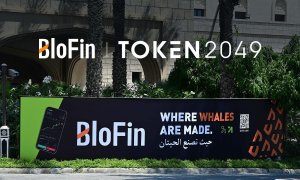ETFs gain $222 million in a week as market liquidity goes topsy-turvy
Volatility nowadays is creating asset class shift. This is how it presents FX brokers with an opportunity

The global spot markets are now starting to witness the upshot of last week’s reported ‘stock chaos’ which was at the time attributed by JP Morgan strategist Marko Kolanovic’s team as the global financial market’s inability to absorb trades easily conspired with other fundamental factors in fomenting wild swings.
The negative correlation between volatility and liquidity has been getting stronger over time, according to the Mr Kolanovic who is the bank’s global head of macro quantitative and derivatives research. As volatility rises, market depth declines exponentially, exacerbating price moves, he said.
A shift from “slower” human market makers, who often rely on valuations, to faster programmatic liquidity that rely on volatility measures to determine risk-taking and position sizing, can strengthen momentum and reduce day-to-day price swings, according to Mr Kolanovic. However, it increases the risk of market disruptions such as that seen in October, he noted.
If this can be taken as a literal reason, it appears that the algorithmic effect on liquidity is once again rearing its head.
Back in 2013, EBS, the electronic brokerage division of interdealer broker ICAP, set in place what it termed at the time a ‘latency floor’ on trades in the Australian dollar/U.S. dollar currency pair, which back then was the fourth most actively traded cross.
Under the move, messages transmitting orders in the Aussie cross will be bundled into batches and then run through a process that randomizes their place in the queue. That could help level the playing field because the first message to hit the system will not necessarily the first order processed. The speed of the randomization process is between one and three milliseconds, EBS said. One millisecond equals one thousandth of a second.
High-frequency traders use powerful computer models to pump a large number of often small orders at a super-fast pace. For second-tier banks, asset managers and corporates who come to the FX market to do cross-border trade or hedge risks, this activity is making it harder to get the best prices before HFT firms.
This issue has to a large extent gone quiet recently, but if Mr Kolanovic’s viewpoint is to be taken seriously, it appears that the effect by algorithmic systems on liquidity is once again upon us all.
This time, however, instead of creating a necessity by the interdealer brokers to intervene, it has driven the professional traders toward ETFs.
The shift to passive investing from active management, specifically the decline of active value investors, reduces the ability of the market to prevent and recover from large drawdowns, according to the strategist. Active managers would often be stabilizing forces because they might buy into weakness, but fundamentally driven, single-name trading now accounts for only about 10 percent of trading volume, he said.
Investors added $222 million to exchange-traded funds that protect against stock volatility in the past week, pushing assets of funds focused on VIX derivatives to more than $3 billion. The VIX itself is down 48 percent this year to 13.2 as of Monday this week amid the overall risk-on rally.
“The depletion of market-reversion forces was driven by a decline of value investors as money moved to passive and systematic strategies and liuidity has become to a large extent driven by market volatility” said Mr Kolanovic.
This has to be a consideration for prime brokerage divisions of Tier 1 banks, all of which are concerned with potential counterparty credit defaults from OTC liquidity takers, and once again underlines the need for approaching a multi-asset market place by retail brokerages.
That massive shift toward ETFs in just a week represents a market opportunity for brokers, as funds are becoming a point of interest for traders in major financial markets centers such as London.
Next month, at The Ned, here in London, FinanceFeeds will host the industry’s first Professional Trading Thought Leadership conference, which matches hedge fund managers, asset managers and professional proprietary trading firms with senior executives of the major components of the FX industry, demonstrating the importance of diversification toward the professional portfolio sector.
Volatility has now become a more sophisticated phenomenon in retail markets, in that it no longer is the cause of trepidation as it was in the aftermath of the removal of the EUR/CHF peg by the Swiss National Bank in 2015 which in some cases created tremendous exposure to negative client balances for brokers, and in other cases actually saw brokerages off entirely.
Today, it is more a case of asset class shift, which is why it is a dynamic that can be capitalized on by brokers willing to connect to multi asset systems.
Well worth it!









